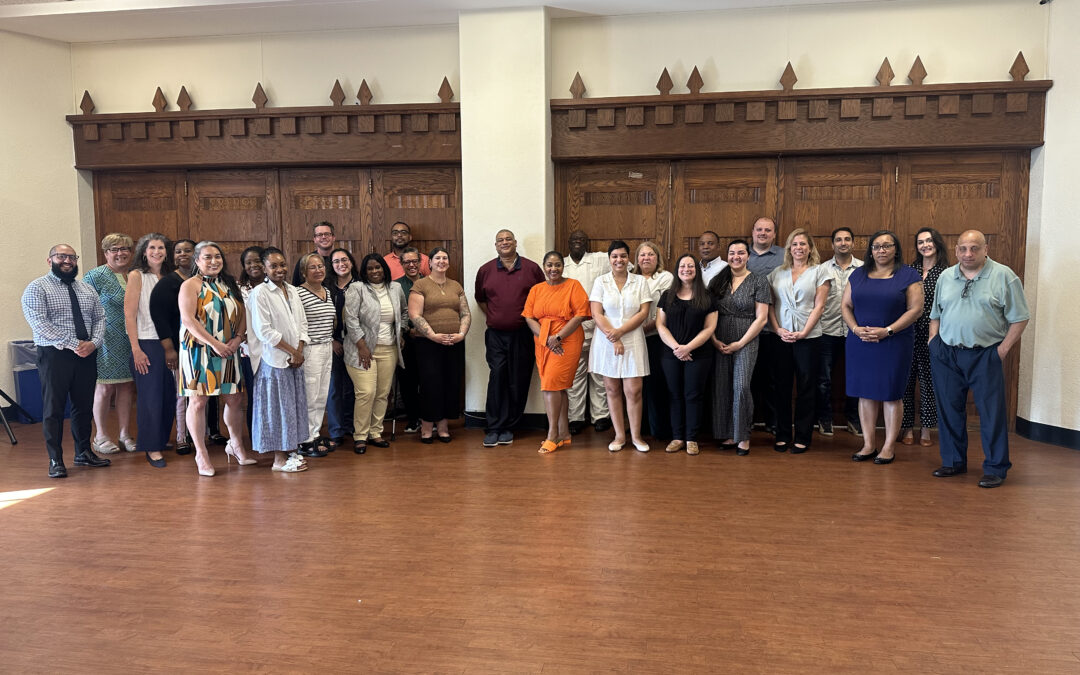“How are you feeling this morning?” (Facilitator Aaron James)
“Stressed.” (LSSNY President and CEO Dr. Damyn Kelly)
“What’s your goal for today?” (Mr. James)
“To talk about the organization and where we’re going moving forward.” (Dr. Kelly)
“Who are you going to ask for help?” (Mr. James)
“Everyone in the room.” (Dr. Kelly)
“We’ve got you.” (everyone in the room, standing in a large circle)
The setting: A conference room inside Riverside Church
The purpose: LSSNY’s Leadership Retreat
The process: A facilitated discussion led by Aaron James, using the Sanctuary Model
These three questions: “How are you feeling?” “What is your goal?” “Who can you ask for help?” are key components of community meetings that use this model.
Through this trauma-informed practice, staff members can be mindful of their own experience of trauma in order to better connect and support the communities LSSNY serves as well as create a positive, safe environment for staff and clients.
“You all are probably one of the safest organizations culturally,” Aaron James tells the nearly 30 assembled leaders.
“You guys felt safe coming into the gate when I started working with you all.
And I think part of the reason why it feels safer here is actually because of one of your big strengths…your diversity.
This agency is the most diverse agency I’ve ever seen anywhere in the country and that’s a true statement,” he says. “Your diversity is going to help you in terms of your future.”
During this all-day leadership retreat, LSSNY leaders talked about the agency’s strengths and weaknesses, opportunities and threats.
About the expanded mission, which is to do more than provide social services — to help effect social change for the communities served.
Facilitator Aaron James kept it lively with group tasks, short one-on-ones, and engaging anecdotes. Snack breaks and a lunch break kept everyone focused.
The retreat concluded with gratitude — for the smart people in the room, the open communication, the deeper connections forged.
Said Chief Programming officer Kerron Norman, “Part of creating the plan is the people you’re going to be working with to do it. Hopefully everyone was consciously aware that it happened, but we created deeper connection and community which will lead us to the solutions that we want to have, it’ll lead to this opportunity to be successful with these smart goals…because there’s more trust that we can do it, there’s more humanity.”
Dr. Kelly reflected on how the culture of LSSNY has changed over the years. “I’m always grateful to see how we’ve grown…culturally, talent-wise, this is such a different organization,” he said. “People didn’t have these types of conversations. So I appreciate the fact that people came with open minds and that they shared thoughts.”
To view photos by Ruth Acevedo, visit us on social media:

